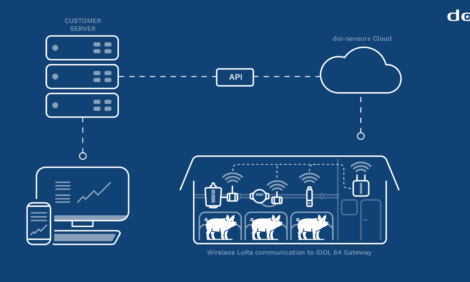



Leman: Economic impact of PRRS
Since 2010, PRRS has cost US pork producers over $1 billion a yearOnyekachukwu Henry Osemeke, Iowa State University, and colleagues at University of Minnesota, presented the results of a study at the 2024 Leman Swine Conference.
The last economic impact of the porcine reproductive and respiratory syndrome virus (PRRSV) in the United States was estimated in 2013 at $664 million a year, using data from 2005 to 2010. Over the last decade, the swine industry has undergone significant changes. This study updated the annual economic impact of PRRSV on US pork producers due to lost productivity.
Data from 2016 to 2020 were used, following the same methodology as the 2013 study. Four factors were used to estimate the cost of PRRSV: the productivity differences between herds that are affected by PRRSV compared to unaffected herds, the distribution of herds according to PRRSV status, the national swine inventory, and production prices and costs.
To estimate productivity differences, breed-to-wean herds (BH) were assigned categories based on the updated American Association of Swine Veterinarians breeding herd classification system, vaccine use, and outbreak history.
BH were classified as:
- BH-A if PRRSV-provisional negative or negative,
- BH-B if PRRSV-positive stable,
- BH-C if PRRSV-positive unstable,
- BH-D for the first 16 weeks following an outbreak in an initially PRRSV-positive herd,
- BH-E for the first 16 weeks following an outbreak in an initially PRRSV-negative herd.
Similarly, growing pig herds (GH) were assigned:
- GH-A status if they were placed negative and stayed negative until market,
- GH-B if placed negative but turned PRRSV wild-type positive by market,
- GH-C if placed PRRSV wild-type positive.
To estimate the national herd distribution, the Morrison Swine Health Monitoring Project (MSHMP) database was used to create summaries of the proportion of the herd weeks within the study period that fell into each BH and GH category. Surveys were used to complement MSHMP data for the GH distribution. Prices and costs were obtained from the US Department of Agriculture (USDA) and InterPIG. The national swine inventories of sows, pigs marketed, and pigs imported were obtained from the USDA.
Data from 297 breed-to-wean farms across 12 production systems were used to estimate BH category productivity differences. Similarly, data from 9 swine companies with a collective average of over 20,000,000 pigs marketed annually were used to estimate GH category productivity differences.
The updated economic cost of PRRSV attributable to productivity losses in the US is $1.2 billion. When adjusted for price changes and the increase in the size of the US breeding herd and the number of pigs marketed since 2010, the annual cost is $1.092 billion, up $428 million from the previous estimate.
Most of the increased cost is due to factors that producers have some control over, including the percentage of US herds in each PRRSV category and the differences in productivity between PRRSV-affected and unaffected herds. About 68% of the current cost comes from the wean-to-market phase. This study emphasizes the growing economic burden of PRRSV and the critical importance of continued efforts to mitigate its impact.







